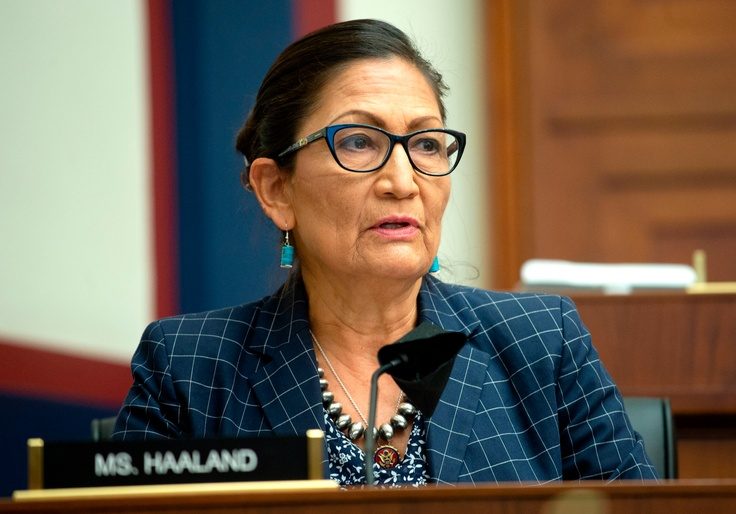The media have been largely silent on a Biden administration energy project that one conservationist said would be "armageddon" for public lands. It’s a far cry from how reporters covered similar proposals under former president Donald Trump.
In December 2022, Interior Secretary Deb Haaland announced that her department would expedite plans to build solar energy farms across tens of thousands of untouched public land in 11 Western states. The announcement has garnered little to no national attention, save for the occasional report that the Biden administration is expanding renewable energy production.
National outlets took a far more critical approach to Trump-era land use proposals. "Where Will Trump’s War on Public Lands End?" the New Yorker wondered in 2017. The following year, a New York Times headline lamented that a "Trump Drilling Plan Threatens 9 Million Acres of Sage Grouse Habitat." The coverage gap indicates a media bias, not just against Trump, but also for green energy.
The Biden administration’s plan would expand on an Obama-era agreement that spurred solar developments in six southwestern states, some of which piqued the ire of locals and environmentalists. The Bureau of Land Management now wants to relax the initial deal’s development restrictions and expand solar developments into five additional states.
A Nevada conservationist who spoke to the Washington Free Beacon on condition of anonymity said that a planned 26,000 acre solar farm in the state’s desert has residents worried. "It’s armageddon for those of us who live out here," he said, noting that the massive solar farms are an eyesore for nearby residents and also emit heat and blinding glares.
Mainstream media outlets generally embrace renewable energy projects favored by Democrats and progressive activists. While these groups demonize fossil fuels, they often overlook the downsides of green energy projects, including solar farms. Building utility-scale solar factories requires taking over vast swaths of land, while "farms" of solar panels disrupt animal grazing habits, destroy small wildlife habits, and harm vegetation. Around 6,000 birds are incinerated each year by the heat-reflecting panels at just one solar project in the Mojave Desert.
Nowhere are the downsides of solar energy clearer than in California, which draws roughly a third of its power from renewable sources. Californians have seen electricity prices skyrocket nearly 70 percent since 2010, as the state started its big embrace of solar energy. California households pay nearly 83 percent more than the average for homes elsewhere in the United States. Last summer saw rolling blackouts for the first time in 20 years, as the grid buckled under the strain of air conditioning use during a heat wave.
Solar panels themselves are fraught with problems. Many of these units are made with nonrenewable, rare earth minerals. Some are manufactured in Chinese factories that rely on forced labor. And discarded solar panels are leaking toxic waste into California’s landfills.
The Bureau of Land Management did not respond to requests for comment.
